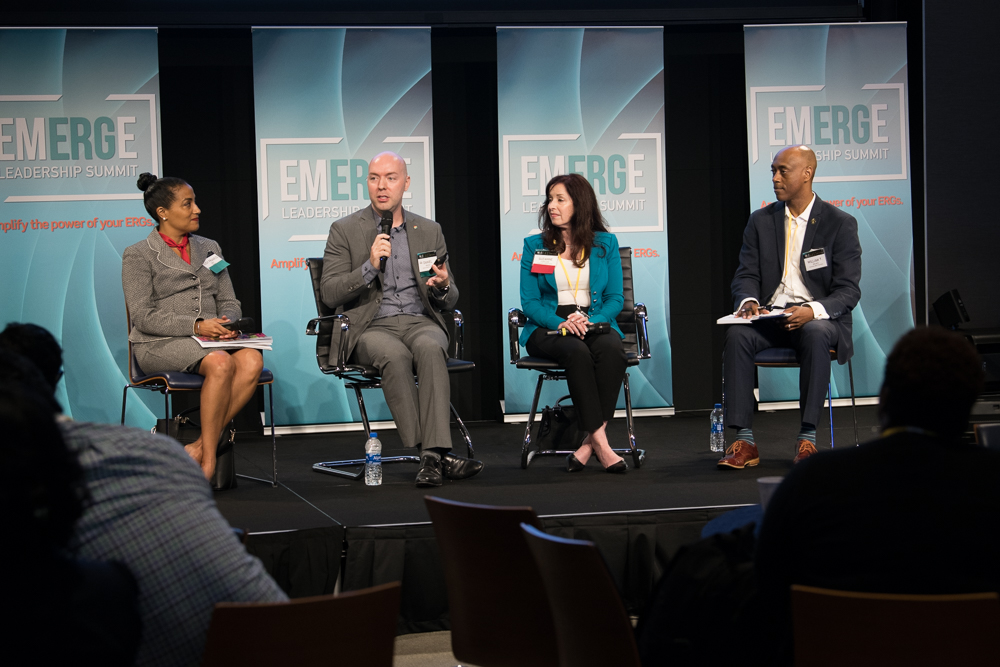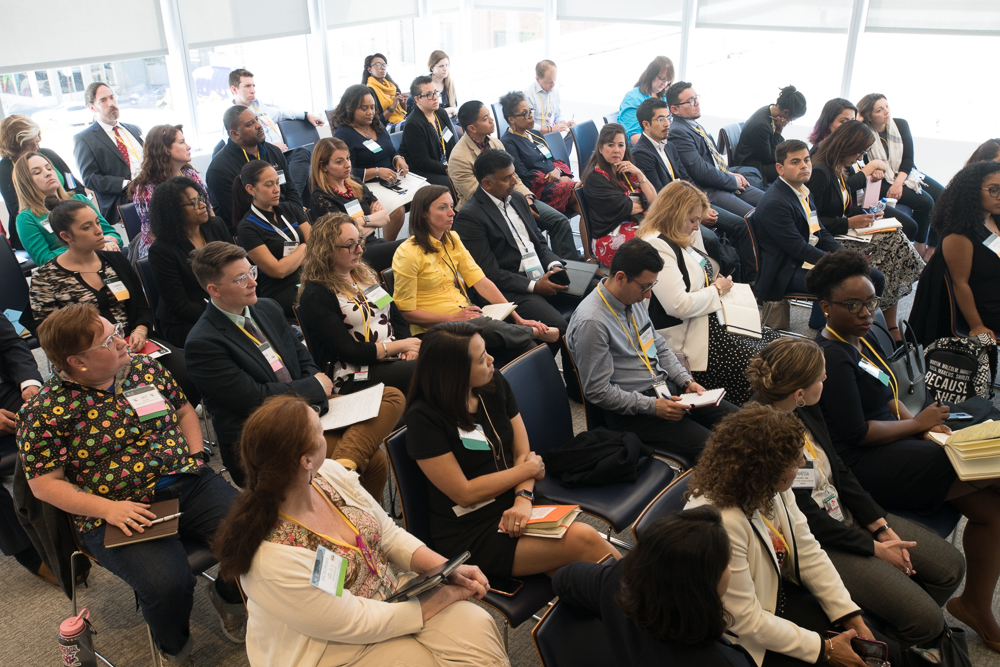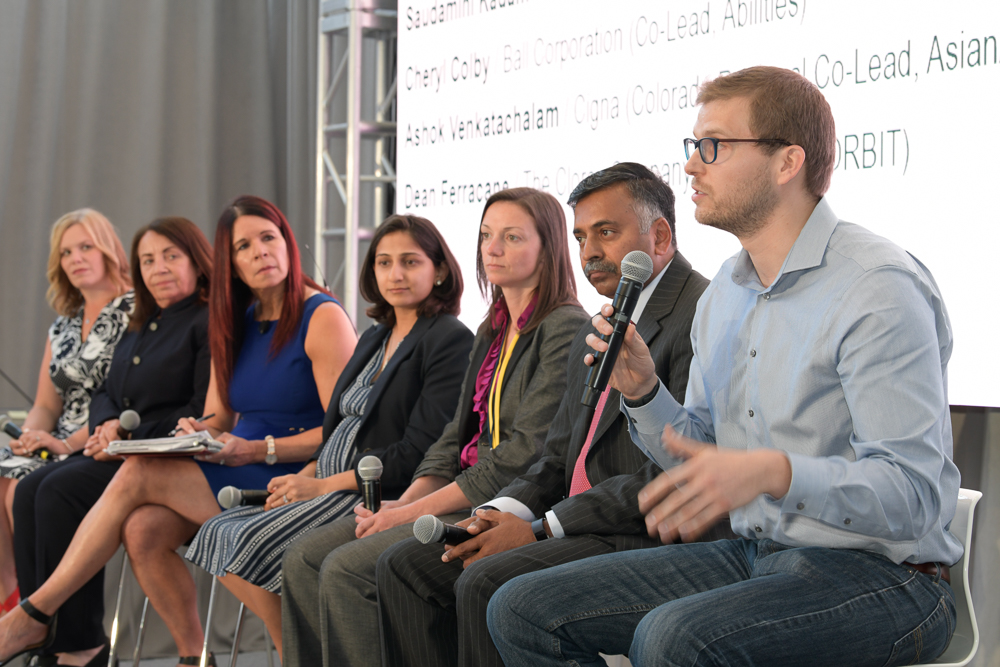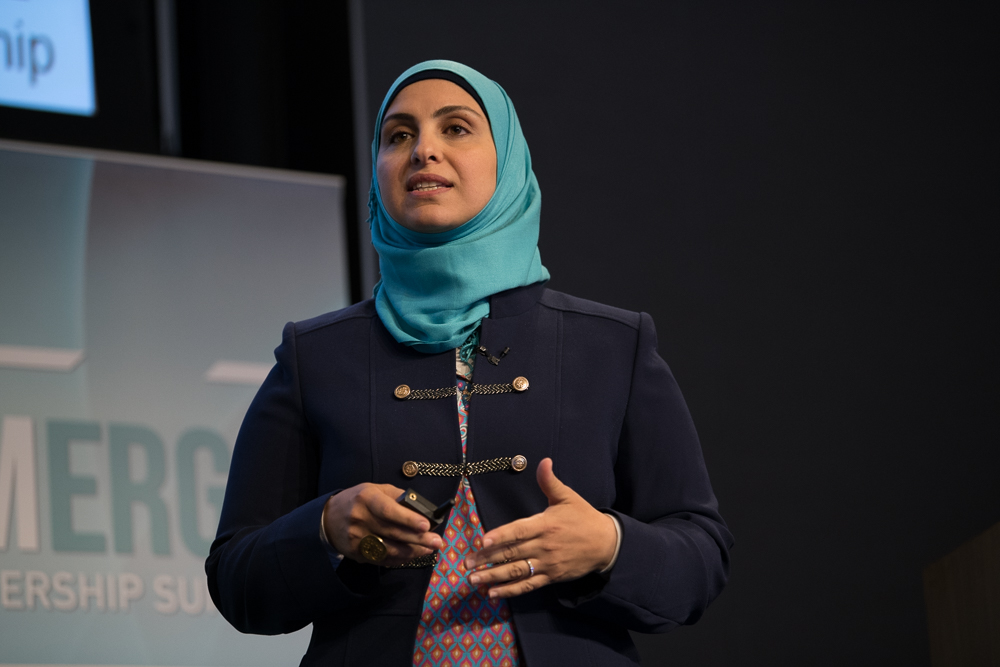Key Takeaways From The 2019 EmERGe East Leadership Summit

Diversity Best Practices’ EmERGe East Leadership Summit once again proved Employee Resource Groups have officially emerged as mainstays in the corporate world, playing a crucial role in developing the talent pipeline and ensuring that diversity, equity and inclusion remain cornerstones of corporate culture.
This year’s theme is “Advocate and Act” and the conference expertly exhibited how employee resource groups are doing just that, stirring change within their respective organizations, making an impact in their communities and taking consistent actionable steps to advocate for and act on fostering inclusion and belonging.
The engaging two-day event—the inaugural rebranding the NALC Conference and the first of three to be held in 2019—featured keynote speakers Rosanna Durruthy, Global Head of Diversity, Inclusion & Belonging at LinkedIn and Hanadi Chehabeddine, Muslim-Inclusion Expert and founder of Hanadi SBC, and culminated with an awards program honoring the Above and Beyond honorees which showcased best practices from ERGs, ERG leaders, and their executive sponsors and allies.
This year’s expanded speaker lineup paired with an offering of more subject matter experts and immersive leadership development opportunities, ensured that attendees left with valuable, tangible takeaways, enabling them to elevate their ERG and diversity and inclusion work.
Here are some of our key takeaways from the kick-off conference:
1. ERG work is not just the work being done at the side of your desk
Diversity Best Practices Executive Director, Deborah Munster, stressed how important ERG roles are to organizations.
“You make impact. You work on retention, you work on recruitment, you engage your communities, you give people meaning to actually being a part of your organization,” she said in her welcome remarks. “Your role should not ever be ‘outside my day job’ but actually embedded into your day job. You are a cross-functional, influential leader within your organization.”

Working Mother Media
2. The goal should be to combat “onlyness”
That’s what LinkedIn’s Global Head of Diversity, Inclusion & Belonging, Rosanna Durruthy, noted in her keynote speech.
She told attendees that she is: “on a mission to combat onlyness.”
“And what that’s about is we still see individuals in our environment who are the only ones: they’re the only black person or the only woman or the only Hispanic person or the only person with a disability or the only LGBTQ person they’re aware of in the environment,” she said.
That aim takes form in increasing the representation of diverse professionals at LinkedIn and making them more successful.
“Internally our ERGs are critical to this focus of how we increase diverse professionals on all levels,” she said.
In conversation with Working Mother Media President Subha Barry, Durruthy discussed LinkedIn’s “bidirectional conversations,” which allow leaders to sit with ERGs, learn from them and vice versa. One such conversation, she said, enabled a leader to “see how frustrating it is to do this work and not see people who look like themselves getting an opportunity to sit at the lead table.”
“It’s not just how we fix things but how we are growing things,” she told Barry and attendees. “That became a really awesome epiphany around how we build something together, not just correct course.”
3. ERGs are indeed incubators for innovation
During the “What’s NEXT: ERGs as an Incubator for Innovation” breakout session, three key insights emerged out of the future-focused success stories of business impact and cross-company collaboration shared by Bristol-Myers Squibb, the NBA, and the Cincinnati USA Regional Chamber.
- Through shared pain comes great generosity.
- Collaboration is critical; none of us have figured this out yet.
- Creating a “collective” for inclusion fosters best practice sharing and joint accountability for creating change.

Working Mother Media
4. The Above and Beyond winners show the strength of collaborating, planning, acting and measuring to achieve change
The Above and Beyond awardees highlighted some themes that many ERGs and organizations can learn from:
- Leveraging intersectionality across ERGs lifts the entire organization.
- Don’t wait for something to happen; make it happen.
- Being an ERG leader is not your “second job.” It’s an integral part of your overall contribution.
And as we noted in our Best Practices from the 2019 Above and Beyond Awards piece, collaboration is a key theme, whether it’s collaborating with key stakeholders or other ERGs to put on events and amplify the message.
Also, measurement matters: measuring success, progress and sharing data that shows the impact of the work is an important factor in positioning an ERG for buy-in from senior leaders and stakeholders.
And lastly, being sure that the programming is strategically aligned with the values and goals of the organization as a whole not only amplifies visibility but can lead to some impactful changes within an organization.

Working Mother Media

Working Mother Medai
5. Be bold. Sharing your story allows you to be an influencer, change agent and pragmatic disruptor
Hanadi Chehabeddine, Muslim-Inclusion Expert and Founder of Hanadi SBC, stressed the power of sharing your story and making sure that it’s communicated with uncompromising authenticity.
“When you are uncompromisingly you, the world will adjust to your presence,” she told attendees in her keynote on day two.
She also discussed the importance of leading with the good, of being conscious of not defining yourself by who you are not.
This authentic communication allows individuals and entire ERGs to transform into magnetic influencers.
And Deborah Munster reminded attendees that you don’t have to be in an authoritative position in order to lead or influence. “It’s important to remember that in your particular roles,” she said.
This authenticity and influence also enables an individual or a team to become a pragmatic disruptor. There were many examples at EmERGe of how individuals are being bold and leading the way, of people who decided to be the driver of their respective bus no. 13, the bus that took billionaire Robert F. Smith and a cohort of black children across town in Denver to attend school in a better district.
“Even if you start with just one passenger your goal is to fill that bus and start. Be that driver; be bold and courageous,” Munster said.
This year’s EmERGe East Leadership Summit was sponsored and hosted by Prudential. Other sponsors include Liberty Mutual, New York Life, Novartis, Colgate-Palmolive, Accenture, Eli Lilly, Alight and Glaxo Smith Kline. Supporting organizations are the United Negro College Fund and Disability:IN.
See more photos from the EmERGe East Leadership Summit here.



